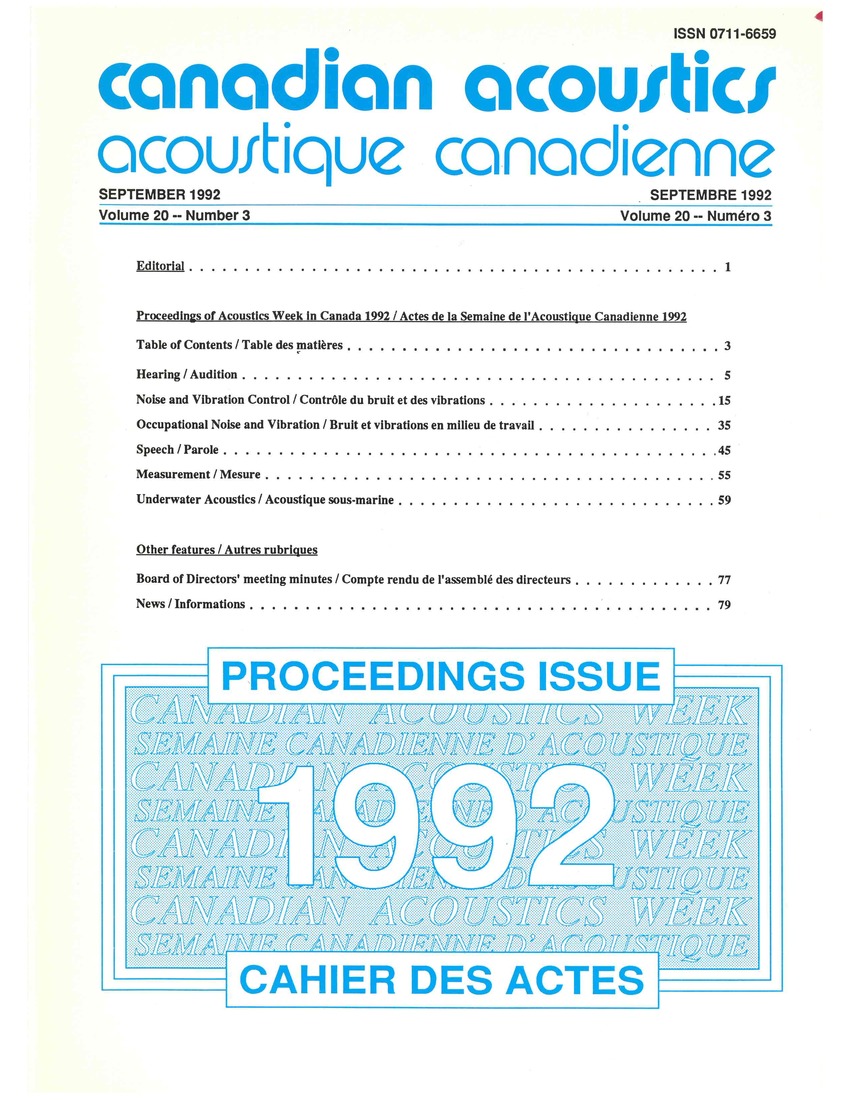Effect of noise field and array configuration on matched-field processing in underwater acoustics
Keywords:
acoustic arrays, acoustic signal processing, sonar, underwater sound, matched-field processing, ambient noise, array configuration, underwater source, thermal ice cracking noise field, fishing boat noise field, localization, billboard arrays, multiple vertical line arrays, horizontal line arraysAbstract
The performance that can be achieved using matched-field processing (MFP) depends on the nature of the ambient noise and the array configuration used to measure the field. Computer simulations were used to estimate MFP performance for an underwater source in different ambient noise fields and for different array configurations. Best MFP performance was obtained in a thermal ice cracking noise field and poorest performance in a fishing boat noise field. For arrays with fewer than 40 sensors in a surface noise field, best localization was obtained with a vertical array geometry. With more than 40 sensors, billboard arrays (composed of multiple vertical line arrays) outperformed horizontal line arrays which in turn outperformed vertical line arraysAdditional Files
Published
How to Cite
Issue
Section
License
Author Licensing Addendum
This Licensing Addendum ("Addendum") is entered into between the undersigned Author(s) and Canadian Acoustics journal published by the Canadian Acoustical Association (hereinafter referred to as the "Publisher"). The Author(s) and the Publisher agree as follows:
-
Retained Rights: The Author(s) retain(s) the following rights:
- The right to reproduce, distribute, and publicly display the Work on the Author's personal website or the website of the Author's institution.
- The right to use the Work in the Author's teaching activities and presentations.
- The right to include the Work in a compilation for the Author's personal use, not for sale.
-
Grant of License: The Author(s) grant(s) to the Publisher a worldwide exclusive license to publish, reproduce, distribute, and display the Work in Canadian Acoustics and any other formats and media deemed appropriate by the Publisher.
-
Attribution: The Publisher agrees to include proper attribution to the Author(s) in all publications and reproductions of the Work.
-
No Conflict: This Addendum is intended to be in harmony with, and not in conflict with, the terms and conditions of the original agreement entered into between the Author(s) and the Publisher.
-
Copyright Clause: Copyright on articles is held by the Author(s). The corresponding Author has the right to grant on behalf of all Authors and does grant on behalf of all Authors, a worldwide exclusive license to the Publisher and its licensees in perpetuity, in all forms, formats, and media (whether known now or created in the future), including but not limited to the rights to publish, reproduce, distribute, display, store, translate, create adaptations, reprints, include within collections, and create summaries, extracts, and/or abstracts of the Contribution.


